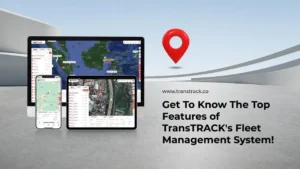Cargo and Regular Shipment, What’s the Difference?
Posted on February 21, 2024 by Nur Wachda Mihmidati

Cargo and regular shipment, what’s difference? When it comes to freight shipping, there are many options available to meet your business needs. However, among the various services offered by logistics companies, the two types of shipping that are often the top choices are cargo shipping and regular shipping.
While both aim to deliver goods from one location to another, they have significant differences in terms of characteristics, costs, delivery times, and services provided. In this article TransTRACK, we will explain in detail the differences between cargo shipping and regular shipping, as well as discuss the benefits and considerations to take into account when choosing between the two.
What is Cargo and Regular Shipment?
Cargo shipping is a shipping service that provides delivery of large quantities of goods or bulky items using modes of transportation such as ships, airplanes, trains, or trucks. Meanwhile, regular shipping refers to shipping small quantities of goods or regular items that do not require special handling and often use courier services or postal services for delivery.
What’s the Difference between Cargo and Regular?
Here are the differences between cargo shipping and regular shipment:
Type of Goods
- Cargo shipping is generally used for large items, such as industrial machinery, cars, or other heavy equipment, as well as large quantities of goods such as full containers.
- Regular shipping is more suitable for small quantities of goods or regular consumer goods such as clothes, books, or electronics that can be shipped in small or large packages.
Shipping Rates
- Freight shipping rates tend to be higher due to the greater operational costs associated with shipping large items, specialized vehicle maintenance, and greater insurance coverage.
- Regular shipments have lower rates due to the smaller size and complexity of the goods, as well as the more efficient use of courier or postal services when it comes to shipping small quantities of goods.
Weight of Goods
- Items sent via cargo shipping usually weigh a significant amount, often in tons or hundreds of kilograms.
- Items sent via regular shipping usually weigh much less, in the range of kilograms to a few tens of kilograms.
Duration of Delivery
- Cargo shipments can take longer due to the use of transportation modes that may require longer journeys, as well as the additional time required for the loading and unloading process at the port or warehouse.
- Regular shipments usually have a shorter delivery duration as they use courier or postal services that can provide fast and direct delivery to the recipient.
Packaging of Goods Packages
- Cargo shipments require more specialized packaging and may require special treatment such as container loading or packing the cargo on pallets.
- Regular shipments may use simpler packaging, such as cardboard boxes or plastic wrap, depending on the needs and characteristics of the goods being shipped.
Service Facilities
- Cargo shipping services usually provide various additional facilities such as cargo insurance, real-time cargo tracking services, as well as special arrangements for shipping dangerous or fragile goods.
- Regular shipping may offer delivery tracking and express delivery options for an additional fee, but often does not provide as complex of additional services as cargo shipping.
Choosing between cargo shipping and regular shipping should consider the characteristics of the goods being shipped, the budget available, the urgency of the shipment, as well as any other special needs the shipper or consignee may have.
In managing freight forwarding activities, understanding the difference between cargo shipping and regular shipping is crucial to choosing a service that suits your business needs. Whether you have large items that require special handling or small quantities that need to be delivered quickly, understanding the difference will help you make the right decision.
To maximize efficiency and accuracy in managing your freight shipments, we recommend using TransTRACK’s Transportation Management System (TMS). TMS is a solution that can help optimize your logistics process, from route planning, real-time shipment monitoring, to inventory management. With TransTRACK, you can increase visibility and control over your entire supply chain, thereby increasing productivity and reducing operational costs.
If you want to improve the efficiency of your freight shipments and optimize the logistics performance of your business, find out more about TransTRACK’s Transportation Management System today!
Recent Post
Topic :
 Bahasa Indonesia
Bahasa Indonesia









